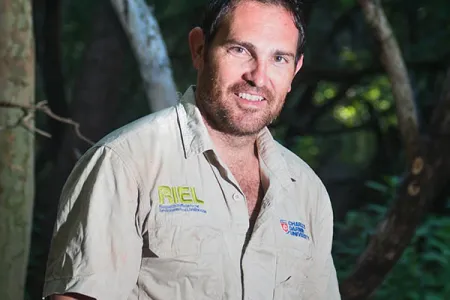Restoring mangroves ‘makes good business sense’
An environmental researcher says there is compelling new evidence to support the idea of using carbon forest markets to finance the restoration of abandoned fish ponds back to mangrove habitats.
Dr Clint Cameron from CDU’s Research Institute for the Environment and Livelihoods undertook extensive field work at sites in Tiwoho (North Sulawesi) and Tanakeke Island (South Sulawesi) Indonesia for his PhD thesis.
“We found that reducing baseline greenhouse gas (GHGs) emissions from dry fish ponds and then removing carbon from the atmosphere as mangroves regrew at Tiwoho was three times more effective in mitigating GHGs than other ecosystems such as tropical rainforests, particularly when Ecological Mangrove Rehabilitation (EMR) techniques were applied,” Dr Cameron said.
EMR is a best-practice approach that emphasises restoring tidal flows to facilitate seedling dispersal and growth of mangrove species at natural levels of tidal inundation. It has been successfully applied in other countries such as Vietnam, Florida and Singapore.
“Basically, restoring tidal hydrology to dry, exposed fish ponds immediately nullifies GHG emissions. It’s like having runs on the board before you even go out to bat.”
Dr Cameron said the findings strengthened the business case for market-based interventions.
“Our evidence indicates that investment in mangrove rehabilitation could deliver three times the GHG emissions mitigation returns compared to other habitats, and we think that framing results in economic terms might appeal to corporations seeking to offset carbon emissions and meet the environmental and social expectations of shareholders.”
Dr Cameron said that while Indonesia still retained the most important and extensive mangrove estate in the world, about half had been destroyed principally through conversion to aqua ponds, which now covered an estimated 1.2 million hectares.
“In most cases these ponds have a life span of between just three and 10 years before productivity declines in parallel with deteriorating water and soil quality. It’s easier and cheaper to hire people to chop down the next mangrove forest and dig a new pond than it is to get an old pond back up to good working order. So, you have this unsustainable cycle where old, disused ponds spit out carbon and other GHGs into the atmosphere and deprive people of all the benefits that healthy mangroves provide.”
Dr Cameron said that in contrast, the rehabilitation of disused aquaculture ponds back to mangroves had the potential to restore the full array of ecosystem services and support the livelihoods of hundreds of millions of coastal people across the tropics.
“Mangroves are an extremely productive ecosystem and highly effective in mitigating the impacts of climate change through their ability to sequester and bury carbon.”
Dr Cameron was one of 17 students to graduate with a PhD in Darwin last month.
